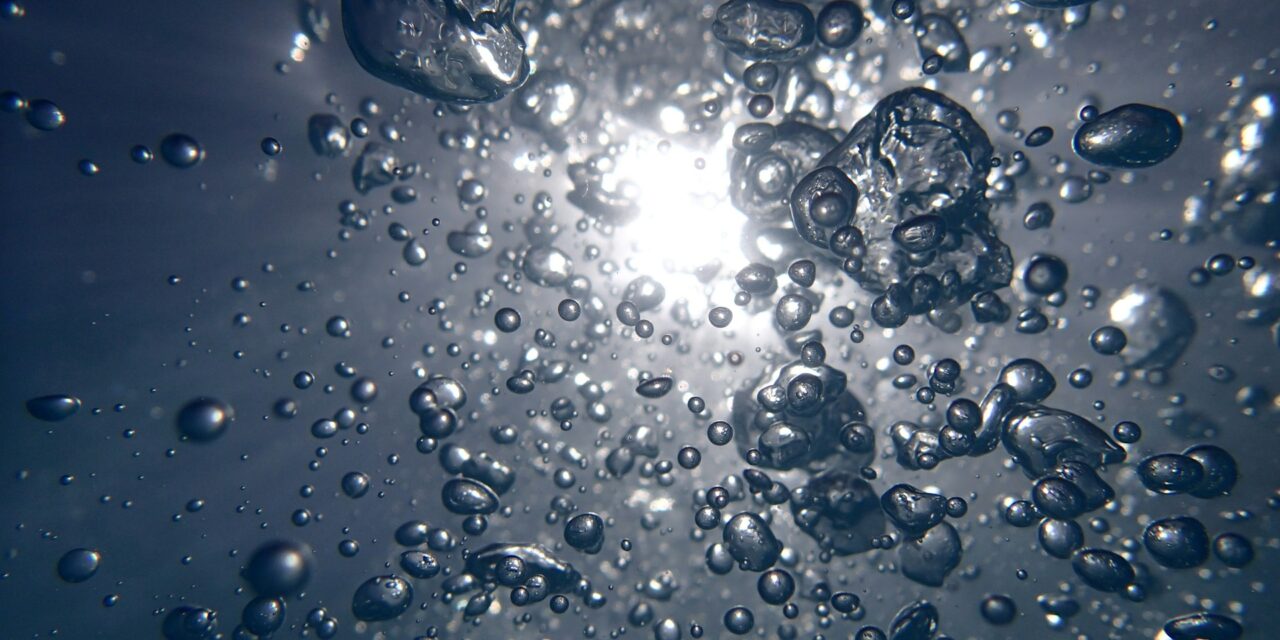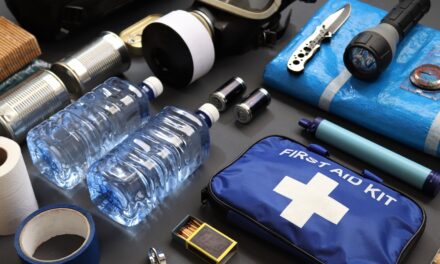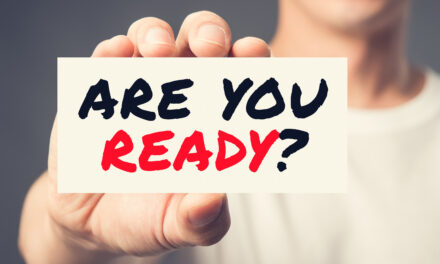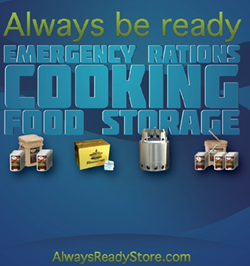In the throes of disaster, access to clean, potable water becomes a paramount concern. The ability to purify water, a seemingly mundane task, can suddenly transform into a lifesaving skill.
This guide will arm you with essential knowledge and techniques to ensure your safety and survival. You’ll discover various methods of water purification, from boiling and distillation to chemical treatment and filtration, each with its unique advantages and applicability.
Embark on this journey to self-reliance and preparedness. Learn how to turn potentially dangerous water sources into safe, drinkable water, even in the most challenging circumstances. This is your ultimate guide to water purification during a disaster. Dive in, and let’s ensure your readiness for any situation.
What is water purification?
Water purification is the process of removing undesirable chemicals, biological contaminants, suspended solids, and gases from water. The goal is to produce water fit for specific purposes, such as drinking, medical, and pharmaceutical applications. In the context of a disaster, water purification becomes a life-saving necessity.
Boiling is a simple and effective method of water purification. It kills many types of disease-causing organisms. However, it does not remove chemical contaminants.
Distillation involves boiling water and then collecting the vapor that condenses back to water. It kills microbes and removes heavy metals, salts, and most other chemicals.
Chlorination is another common method used to purify water. It involves adding a measured amount of chlorine to water to produce a residual amount of chlorine. It is effective at killing bacteria, but not all protozoa and viruses.
Water filters are also a popular choice for water purification. They remove bacteria and other contaminants, depending on the type of filter used.
UV light is a more modern method of water purification. It kills bacteria and other microbes by damaging their DNA. However, it requires electricity, which may not be available during a disaster.
In a disaster situation, ensuring safe drinking water is crucial to prevent the spread of diseases. The method of water purification used may depend on the resources available and the type of contaminants present in the water.
Why is clean water important during a disaster?
Clean water is the cornerstone of survival, especially during a disaster. Dehydration can set in quickly, leading to a host of health issues such as dizziness, confusion, and even organ failure. Boiling water is a simple method to purify it, killing bacteria and viruses, making it safe to drink.
In situations where boiling is not possible, water purification tablets are a practical solution. These tablets can neutralize pathogens, providing drinkable water within 30 minutes. Remember, the goal is to eliminate harmful contaminants that can cause illnesses like cholera and dysentery.
Portable water filters are another option. These devices remove impurities through a physical barrier or a chemical process. They’re lightweight, easy to use, and can purify hundreds of liters of water.
During a disaster, clean water isn’t just needed for drinking. It’s also vital for maintaining personal hygiene and preventing the spread of diseases. That’s why having a rainwater collection system can be beneficial. It provides a sustainable source of water for washing and cleaning.
Finally, remember that the clarity of water doesn’t necessarily indicate its safety. Clear water can still contain microscopic pathogens. Therefore, regardless of the source, always treat water before consumption during a disaster.
Can boiling water purify it?
Boiling water is indeed a viable method to purify it, especially during a disaster when access to clean water may be limited. The process of boiling water eliminates harmful bacteria, viruses, and parasites that can cause diseases. The high temperature during boiling, typically at 100 degrees Celsius or 212 degrees Fahrenheit, is sufficient to kill most pathogens.
However, it’s crucial to note that boiling water does not remove chemical contaminants or heavy metals. If you suspect the presence of chemicals in your water, consider using a water purifier or activated charcoal.
Here are the steps to purify water by boiling:
- Fill a pot or kettle with water.
- Bring the water to a boil.
- Keep the water boiling for at least one minute.
- Let the water cool before drinking or using.
In situations where you cannot boil water, there are other methods such as using water purification tablets, a water filter, or even the sun’s UV rays for disinfection. Remember, having access to clean, safe water is crucial during a disaster, not just for drinking but also for hygiene and food preparation.
While boiling is a simple and effective method, it’s always advisable to have multiple strategies for water purification ready in case of a disaster. This ensures you’ll have a safe water source no matter the circumstances.
What are water purification tablets?
Water purification tablets are a compact, lightweight, and efficient solution for treating water in emergency situations. They are designed to kill microorganisms in water to prevent diseases such as cholera, typhoid, and dysentery, which can be life-threatening, especially during a disaster. These tablets are typically made from substances like iodine, chlorine, or chlorine dioxide, which are known for their disinfecting properties.
The process of using these tablets is quite straightforward. You simply add the tablet to the water, and wait for the recommended time, usually 30 minutes to four hours, depending on the brand and the purity of the water. The waiting time allows the active ingredients to work, killing bacteria, viruses, and other harmful microorganisms.
Water purification tablets have a long shelf-life, making them an ideal item to include in your emergency preparedness kit. However, it’s important to note that while they are effective in killing many types of microorganisms, they cannot remove chemical pollutants or filter out solid debris. Therefore, if possible, it’s advisable to filter the water first before adding the tablets.
Water purification tablets are a convenient and essential tool for ensuring safe drinking water during a disaster, when access to clean water might be compromised. They are easy to use, transport, and store, making them a reliable choice for emergency water treatment.
How does a portable water filter work?
Portable water filters are a crucial tool for ensuring safe drinking water during disasters. They operate on a simple principle: physically separating harmful contaminants from the water. The first step involves the pre-filter, which removes larger particles such as sediment and dirt.
Next, the water passes through an activated carbon filter. This layer adsorbs organic compounds, chlorine, and some heavy metals, improving both the taste and odor of the water.
The final stage is the membrane filter, typically made from ceramic or fiber. It traps bacteria, protozoa, and microplastics, rendering the water safe to drink. Some advanced filters also include an ion exchange resin to remove heavy metals and a UV light to kill viruses.
To use a portable water filter, you simply need to draw water into it, either by sucking through a straw or pumping manually. The water is then forced through the multiple layers of filtration, resulting in clean, potable water.
It’s important to note that while portable water filters are highly effective against most contaminants, they cannot remove chemicals or salts. Therefore, they are not recommended for use with seawater or chemically contaminated sources.
Maintenance of these filters is also essential for their longevity and effectiveness. Cleaning the pre-filter and backwashing the membrane filter can help maintain the filter’s performance over time.
In the face of a disaster, having a portable water filter can be a lifesaver, providing access to safe drinking water when it’s most needed.
Can bleach purify water?
In the face of a disaster, one may wonder: Can bleach purify water? The answer is yes. It’s a surprisingly effective method of water purification, widely used when no other options are available. A small amount of household bleach can make a significant difference in making water safe for consumption.
It’s important to note that only regular, unscented bleach is suitable for this purpose. The bleach should contain 5-6% sodium hypochlorite, which is the active ingredient that kills bacteria and viruses.
Here’s a simple step-by-step guide to purifying water with bleach:
- First, filter the water to remove any visible dirt or debris.
- Then, add 1/8 teaspoon (or 8 drops) of bleach per gallon of water.
- Stir the mixture and let it stand for 30 minutes.
- The water should have a slight bleach odor. If it doesn’t, repeat the dosage and let it stand for another 15 minutes before use.
Remember, while bleach can effectively kill bacteria and viruses, it won’t remove chemical pollutants or heavy metals. Therefore, it’s crucial to source the cleanest water possible before treatment.
Also, this method should only be used in emergency situations where no better water purification methods are available. Long-term consumption of bleach-treated water can lead to health issues. Always prioritize filtered, boiled, or bottled water when possible.
Purifying water during a disaster is a critical survival skill. Knowing how to use common household items like bleach can make a significant difference in such situations.
What is solar water disinfection?
Solar water disinfection, also known as SODIS, is a method of purifying water that utilizes solar energy. It’s an effective way to treat contaminated water, particularly during a disaster when traditional water treatment methods may not be available. The process involves exposing water-filled plastic or glass containers to the sun for a minimum of six hours. The ultraviolet radiation from the sun kills or inactivates many types of disease-causing organisms, making the water safe for consumption.
This method is ideal in emergency situations because it requires minimal resources. All you need is a clear plastic or glass container, sunlight, and time. It’s important to note that the water should be relatively clear for this method to be effective. If the water is murky or has a lot of suspended particles, it should be filtered before undergoing solar disinfection.
Here are the steps involved in solar water disinfection:
- Fill a clear plastic or glass container with water.
- Place the container in direct sunlight.
- Leave the container in the sun for at least six hours.
- After six hours, the water should be safe to drink.
Solar water disinfection is a simple yet effective method of water purification. However, it’s crucial to remember that it doesn’t remove chemical contaminants. In a disaster scenario, it can be a lifesaver, providing access to safe drinking water when other options may not be available.
How to store purified water?
Storing purified water properly is crucial, especially during a disaster. The first step is to use clean, food-grade water storage containers. These containers should be thoroughly cleaned and sanitized before use. You can use a solution of one teaspoon of non-scented household chlorine bleach to a quart of water.
Seal the containers tightly, label them with the date, and store them in a cool, dark place. It’s essential to rotate the water storage every six months to keep it fresh. This is where the boil-water method can come in handy.
For larger quantities of water, you might consider a water barrel or a waterBOB, which is a large plastic bag that fits in your bathtub and holds up to 100 gallons of water.
Remember, the key to water storage is cleanliness. Any contamination in the container or the water can lead to bacterial growth, making the water unsafe to drink.
When it comes to safe water storage, it’s important to consider the potential for natural disasters or other emergencies. By preparing in advance and storing water correctly, you can ensure you have a safe, clean supply of water when you need it most.
If you have a well, consider investing in a manual pump or a solar-powered pump in case of a power outage.
Here are some tips for storing purified water:
- Use food-grade water storage containers.
- Seal the containers tightly and store them in a cool, dark place.
- Rotate your water storage every six months.
- Consider larger storage options like water barrels or a waterBOB for emergencies.
- Keep your storage area clean to prevent bacterial growth.
Remember, the goal is to have a reliable source of clean, safe drinking water in a disaster situation. By following these steps, you can ensure you’re prepared for whatever comes your way.
Conclusion: The Importance of Water Purification During Disasters
In sum, understanding “”How can I purify water during a disaster”” is a critical aspect of disaster preparedness. We’ve explored the concept of water purification, its significance during a disaster, and various methods of achieving clean water, such as boiling, using purification tablets, portable water filters, bleach, and solar disinfection.
Clean water is vital during a disaster for hydration, hygiene, and overall health. Boiling water is a simple yet effective purification method, while purification tablets and portable filters offer convenience and portability. Bleach, though unconventional, can be used for purification, and solar disinfection presents an eco-friendly option.
Storing purified water properly is also essential to ensure its safety over time. The knowledge of these methods empowers individuals to secure clean water sources during crises, reducing reliance on external aid.
As technology continues to evolve, we can anticipate more innovative and efficient water purification methods in the future. This could range from advanced filtration systems to new disinfection techniques. By staying informed and prepared, we can better navigate and overcome the challenges presented by disasters. Remember, the key to survival in any disaster scenario is preparedness and adaptability.








